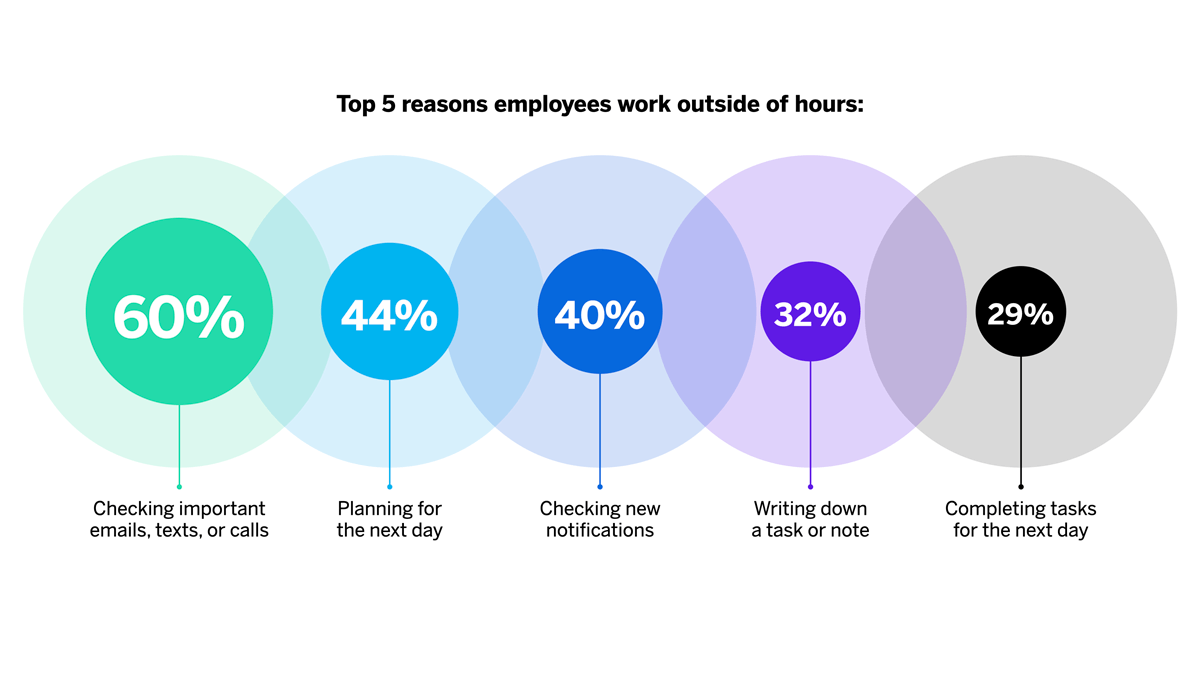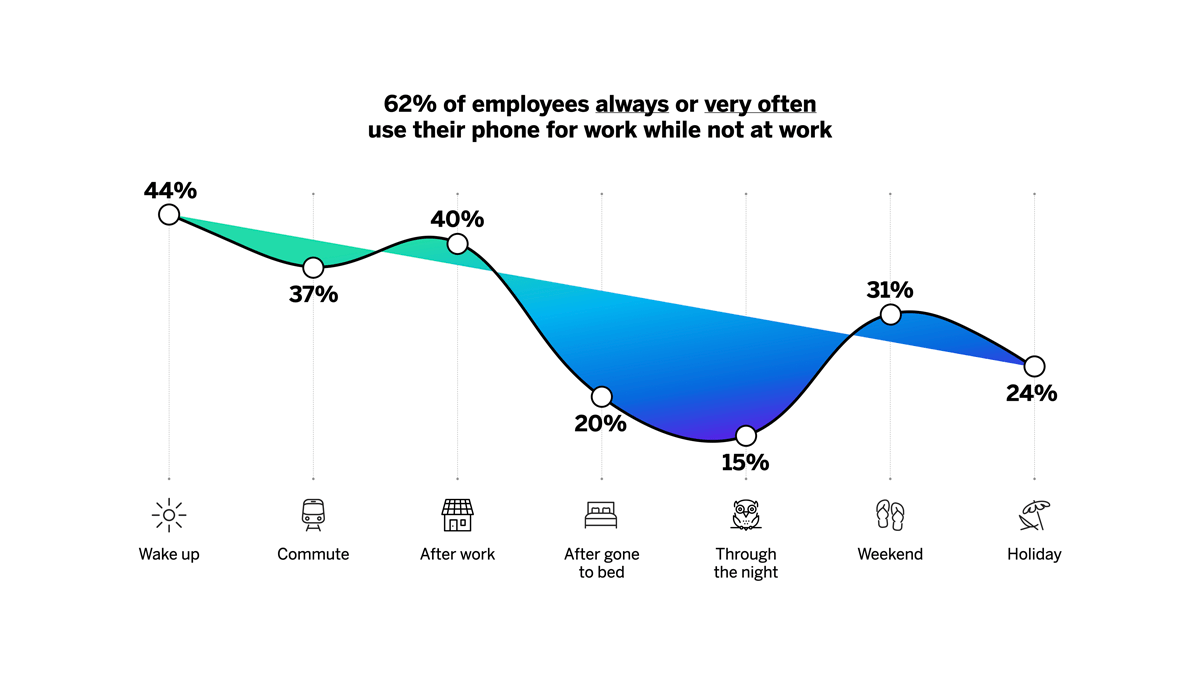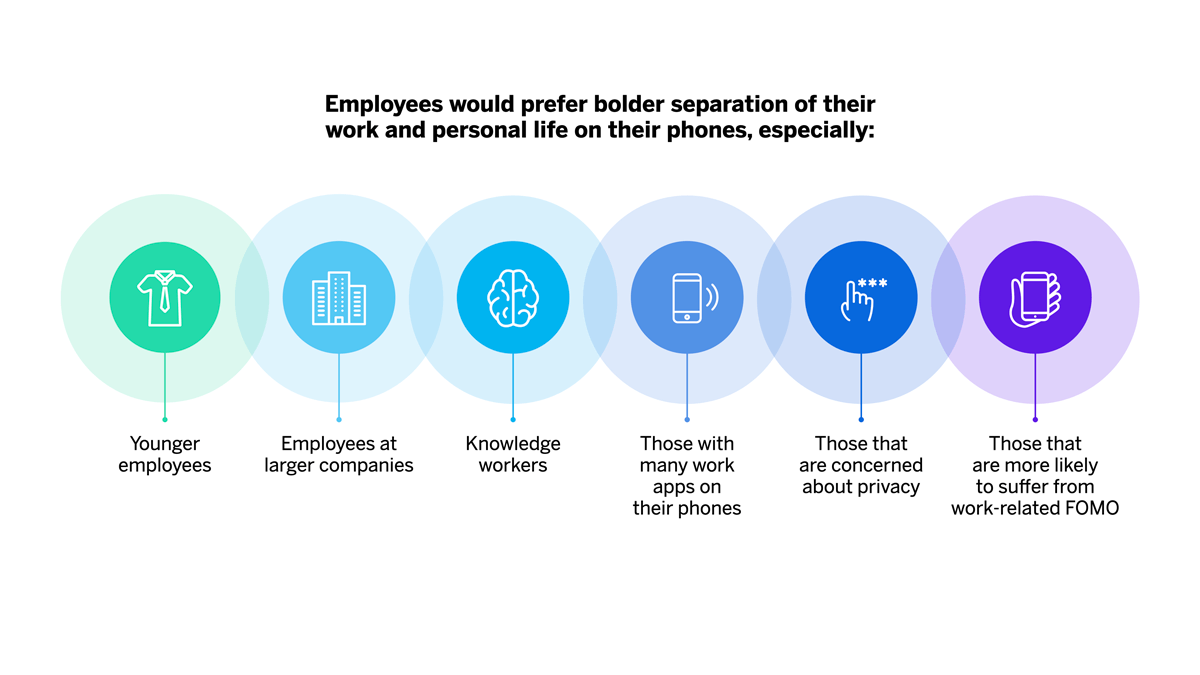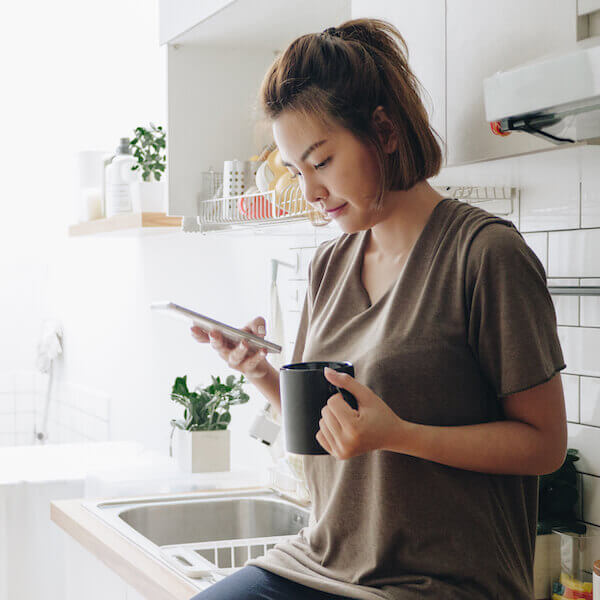When the pandemic hit, many of us were suddenly asked to merge our work space and our personal space into one — but not just physically. As we (literally) brought our work home with us, it became more difficult to mentally separate the two.
Remote work has now fundamentally changed the employee experience, and the future of work will likely look much different than it did pre-pandemic. While some companies want all employees to come back into the office, others have transitioned to hybrid or all-remote work. As knowledge workers in every industry become even more reliant on their technology to get work done (especially their mobile phones), there’s an expectation to do work from anywhere and at any time.
How are workers coping with those compounding expectations? In a recent Qualtrics and Google study, we asked more than 3,000 employees around the world about:
- their ability to disconnect from work after (and before) hours,
- how their mobile phones affect their employee experience and the separation between their work and personal lives — especially now, and
- how the Android work profile, a platform-level separation of work apps and data on Android phones, allows users the ability to parse their work and personal life on their mobile phones
Here’s what we found:
FOMO makes it difficult to maintain work-life balance
Even before many of us began working from home, maintaining a healthy work-life balance was never an easy feat. In fact, 34% of employees say it was difficult to resist checking work notifications while at home, while only 29% say it was difficult to resist checking personal notifications while at work.
But why is it difficult to maintain this balance? Data indicates that it may be a classic case of FOMO, or fear of missing out. Most employees display work-related FOMO, which keeps them from disconnecting. And that inability to disconnect likely stems from an expectation that being more available makes them a better employee. In fact, it’s mostly emails, notifications, and next-day reminders that keep employees from mentally clocking out.

Knowledge workers and those who work demanding jobs also have a harder time disconnecting after work.
- 36% of knowledge workers find it difficult to resist the urge to check on work outside of hours, compared to 28% of flexible/gig workers
- 50% of those that work more than 54 hours a week find it difficult to resist the urge to check on work outside of work hours, compared to 31% of those who work 35-39 hours
Creating a work-life balance with our constant companions: our phones
The FOMO that drives us to check our notifications, emails, texts, and calls after hours doesn’t often drive us back onto our laptop, however. The majority of consumers (80%) use only one phone, and about half use that phone for both their personal and work life (15% use two phones — one for work and one for personal use). And the larger the company or organization, the more likely employees are to have more work apps on their phones.
Nearly two out of three employees (62%) always or very often use their phone for work while not at work. And almost half of all employees use their phone for work right when they wake up, 40% continue doing so after work, and about a third use their phone for work on weekends.

Though carrying one phone is more practical than carrying two, many employees find that using one phone for both work and personal reasons means their work-life balance takes a hit:
- Of those who use only one phone, more than half say one of their motivations for doing so is practicality
- Their top three frustrations of using one phone for both work and personal, however, are:
- 35% say it hurts their work-life balance
- 26% say a lack of privacy
- 22% say a lack of security
- How concerned are one-phone users about keeping their data private?
- 26% are concerned with keeping the personal data on their phone private, but:
- 70% rarely or never think about what data their company can access
- 48% completely or strongly trust their company with data
- 26% are concerned with keeping the personal data on their phone private, but:
Creating a healthy work-life balance
Though creating a healthy work-life balance can be difficult, especially as remote work becomes a greater part of the employee experience, it seems the majority of employees have found some harmony: about two out of three employees (65%) are extremely or very satisfied with their work-life balance and work 38 hours on average.
- Employees at large companies report higher work-life balance satisfaction. They’re more likely to work longer hours, but they’re also more likely to work set hours — which may make it easier to “check out” outside of work
Separation is key to creating that work-life balance, and 70% of employees would prefer greater separation between their work and personal life on their phones:

Work profile
To create that separation, many smartphone users utilize the Android work profile to divide their work and personal lives on their mobile devices. And it seems the ability to physically segregate work apps and data from personal apps and data has helped mobile phone users increasingly find that coveted work-life balance.
- Work profile users are more satisfied with the way they can manage work and personal life on one phone: 81% of work profile users say they are satisfied, compared to 71% of non-work profile users
- Work profile users are more satisfied with their work-life balance: 70% of work profile users are extremely or very satisfied, compared to 63% of non-work profile users
As remote work becomes a fixed part of the employee experience and the future of work, leaders, people managers, and employees alike will need to continue finding ways to create a separation between their personal and work lives — especially on their mobile phones — in order to create a healthy work-life balance.
To test drive Android work profile on your device and learn more about how it helps users maintain separation between their work and personal lifestyles, check out Google’s blog.
